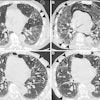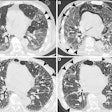
An artificial intelligence (AI) algorithm that estimated fractional flow reserve (FFR-CT) on coronary CT angiography (CCTA) outperformed visual stenosis scoring by clinicians for detecting lesion-specific ischemia in men -- but not women, according to research published online September 7 in the European Journal of Radiology.
A multinational team of researchers, led by Dr. Stefan Baumann of the Medical University of South Carolina in Charleston and the University Medical Centre Mannheim in Germany, compared the performance of the machine-learning algorithm for deriving FFR results with that of subjective scoring of stenosis on CCTA studies by experienced human observers.
They found that the algorithm yielded a statistically significant improvement for detecting lesion-specific ischemia on a per-vessel basis in men. Although it also produced higher performance in women, these gains did not reach statistical significance.
Coronary artery disease (CAD) and associated baseline characteristics can appear differently in men and women, a dynamic that supports the use of a sex-specific approach for CAD evaluation. As women are likely to have coronary artery and myocardium characteristics that could affect both CCTA and FFR-CT analysis, the researchers sought to evaluate the potential impact of the differences of men and women on the performance of a machine-learning algorithm.
They studied data from the Machine Learning-Based CT Angiography-Derived FFR: A Multi-Center Registry (MACHINE) consortium -- a collaboration among five institutions in North America, Europe, and Asia to evaluate machine-learning applications for FFR-CT. Their database included a total of 351 patients with known or suspected CAD who had received CCTA and invasive coronary angiography to calculate FFR. Of these 351 patients, 258 (73.5%) were male and 93 (26.5%) were female.
First, an experienced local observer with at least five years of cardiovascular imaging experience evaluated the CCTA studies and then classified and graded the stenoses based on Society of Cardiovascular Computed Tomography guidelines. Next, an independent, experienced FFR-CT user applied version 2.1 of the work-in-progress cFFR machine-learning algorithm (Siemens Healthineers) at the location of the invasive FFR measurements. A software-calculated FFR-CT value of 0.80 or less was considered to indicate lesion-specific ischemia.
The researchers then compared the performance of the FFR-CT machine-learning algorithm and the observer's scores of the CCTA studies with the gold standard of invasive FFR measurements.
| FFR-CT AI vs. observer scoring for lesion-specific ischemia | |||
| CCTA analysis and stenosis scoring by experienced observers alone | FFR-CT analysis on CCTA studies calculated by machine-learning algorithm | p-value | |
| Men | 0.76 | 0.83 | p = 0.007 |
| Women | 0.74 | 0.83 | p = 0.12 |
The software produced a statistically significant increase in accuracy for men (p = 0.007) but not for women (p = 0.12), perhaps due to the larger number of men included in the study.
The algorithm's lower performance in women could be caused by a variety of factors. For example, diminution of vessel diameter in women may cause inaccuracies during FFR-CT calculation due either to poor attenuation in distal segments or a detrimental impact on fluid dynamic simulation, according to the researchers.
"Also, a lower [left ventricular] mass in comparison to their male counterparts may have implications on the accuracy of functional testing," they wrote.
Previous studies have also highlighted sex differences in coronary stenoses, coronary plaque burden, and plaque composition, they noted.
"Thus, when considering the significant differences between the genders, ranging from clinical presentation to anatomical and physiological characteristics, it is apparent that a gender-specific approach during the clinical workup of CAD is warranted," the authors wrote. "The paradox that exists in female CAD, characterized by a lower prevalence of obstructive disease but higher prevalence of clinical presentation, ischemia, symptomatic complaints, and mortality compared to men, elucidates the current disparity in sex-specific medical treatment for heart disease. The use of CT-FFR in a gender-specific manner may provide insights into the discrepancies between male and female characteristics of CAD."



















